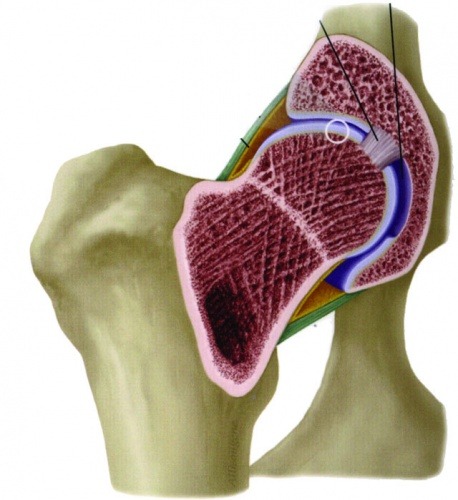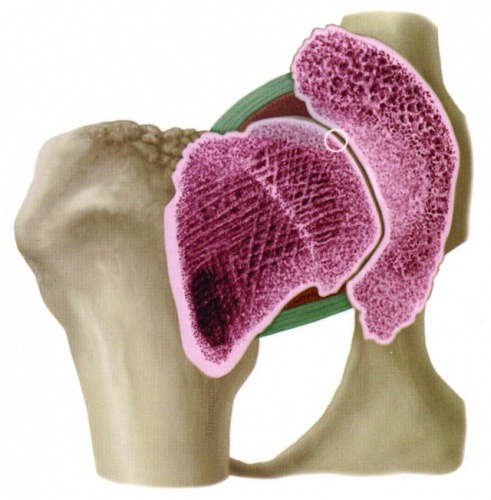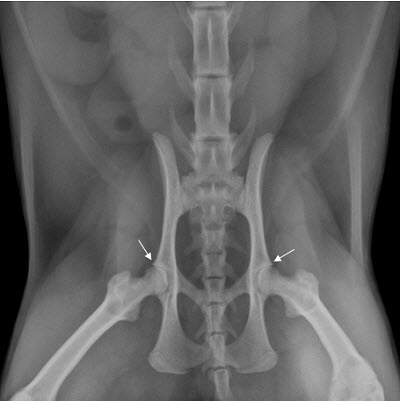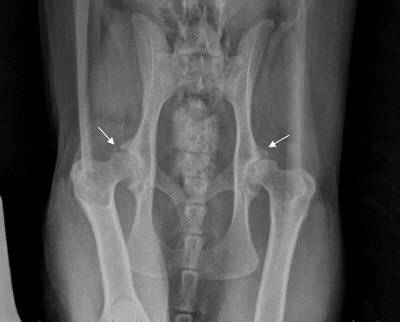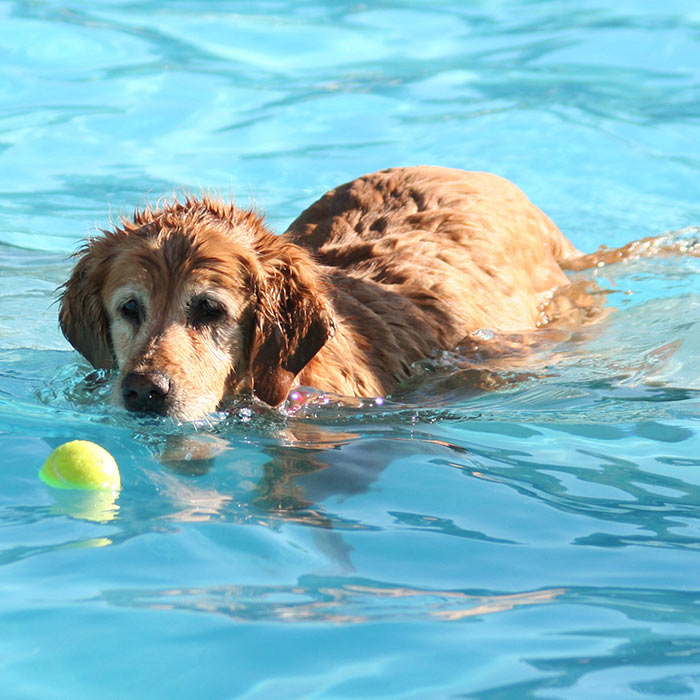Arthritis in dogs and cats
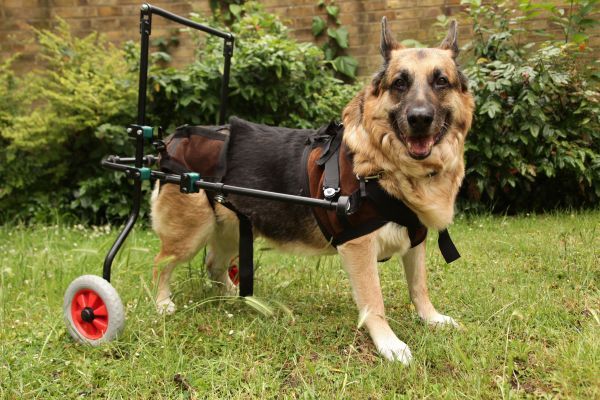
Arthritis is a general term for abnormal changes in a joint. Usually it relates to inflammation of the joint, which hampers movement and causes discomfort and pain. Arthritis often leads to further problems because the dog or cat suffering from arthritis is less mobile and tends to gain weight as a result of this, while the continued disuse of the affected joint further impedes the joint’s mobility.
How common is arthritis in pets?
The 2025 Pet Health Monitor reveals that the incidence of arthritis is on the rise, particularly in older pets.
How common is arthritis in dogs?
Arthritis in dogs is a common condition, affecting one in five adult dogs. It is a major cause of chronic pain in older dogs and can result in permanent joint damage. The most commonly affected joints in dogs are the hips, knees, shoulders and elbows.
Dog breeds more at risk of arthritis:
- Labradors are 1.6 times more likely than other dogs to develop lameness and arthritis, driven by genetics and weight.
- German Shepherds are 1.5 times more likely than other dogs to develop arthritis.
- Staffordshire Bull Terriers are 1.3 times more likely to experience lameness and arthritis.
- Border Collies are somewhat more likely than the the average dog to develop arthritis as they age.
How common is arthritis in cats?
Arthritis in cats was considered an uncommon condition in the past, but more recently this has been disproved. A study in 2011 showed that 61% of cats over 6 years old had at least one joint evidencing arthritic change, and a 2002 study showed that up to 90% of cats over 12 years showed signs of the disease. In cats, the most commonly affected joints are the shoulders, elbows, hips and spine.
Cat breeds more at risk of arthritis:
- Burmese cats are more than twice as likely to develop arthritis as the average, possibly linked to their stocky build.
If your pet is showing signs of arthritis, it might be time to schedule regular check-ins with your veterinarian. Routine visits can help monitor their condition, adjust treatment plans as needed, and keep them as comfortable and active as possible. Managing arthritis early can make a big difference in their quality of life.
Unsure how serious it is?
Bow Wow Meow policyholders can get access to trusted vet care anytime, anywhere, at no additional cost. Connect to an experienced Australian registered vet via video call, 24/7. Whether it’s providing vet advice, setting up at-home treatment plans, or confirming if you need to visit a vet in person, you can get help when you need it.
Find out more about our pet insurance cover options.
What is arthritis in dogs and cats?
Normal joints have a layer of cartilage which acts as a cushion between the bones and provides a smooth surface for the adjoining bones to slide over freely. The joints also contain fluid which provides lubrication to assist with movement. When arthritis sets in, the cartilage deteriorates and the fluid loses its lubricating effect, resulting in less smooth movement of the bones, which causes discomfort and reduced mobility.
Three common forms of arthritis in dogs and cats
1. Osteoarthritis / Degenerative Joint Disease
Osteoarthritis is a progressive degeneration of the cartilage between the joint bones, causing friction between the bones. It is usually caused by wear-and-tear, but can also result from injury, fractures and dislocation. It can lead to the bones eroding into each other, causing chronic pain.
Osteoarthritis is the most common form of arthritis in dogs and cats and is most often seen in the weight-bearing joints of older animals. It was the seventh most common condition in dogs and the eighth most common condition in cats in 2024, according to PetSure claims data, and it was the most common condition in dogs of eight years and older.
Learn more about osteoarthritis in dogs
2. Septic Arthritis / Inflammatory Joint Disease
Septic arthritis can be brought on by an infection or an injury. The cartilage becomes inflamed around one or more joints and often there is also a build up of fluid around the joint,
Septic arthritis can result from an inherited immune system defect.
3. Rheumatoid Arthritis / Polyarthritis
Rheumatoid arthritis occurs when the animal’s own immune system attacks the joints as part of a general attack of the body’s tissues.
The condition causes damage to the joint lining and cartilage and can lead to erosion of the bones in the joint.
Other much rarer forms of arthritis are:
- Metabolic – bleeding into joints
- Crystalloid – crystals form in the joints
- Neoplastic – joint cancer
Cost of arthritis treatment for dogs and cats
According to Petsure data from 2024, osteoarthritis was the seventh most common condition claimed for in dogs overall, and the eighth most common in cats. Osteoarthritis was the most common claim for dogs over eight years old.
The average and highest costs of treatment in 2024 for osteoarthritis were as follows:
| Claims data for osteoarthritis | Average cost of treatmentØ | Highest cost of treatmentØ |
| Dogs (all ages) | $823 | $39,289 |
| Dogs 8+ years old | $831 | $21,936 |
| Cats (all ages) | $779 | $8,032 |
ØBased on PetSure claims data, 2024 calendar year. Reimbursement for these claims under a pet insurance policy would be subject to limits, such as annual benefit limits or sub-limits, benefit percentage, applicable waiting periods and any applicable excess. Cover is subject to the policy terms and conditions. You should consider the relevant Product Disclosure Statement or policy wording available from the relevant provider. Please note that values calculated are based on all claims for that condition and medically related conditions in each calendar year.
Because it is difficult to predict the costs of veterinary care, it can help to have measures in place to help prepare for the unexpected. Pet insurance can help by covering a portion of the eligible vet bill if the unexpected does happen.
Get a quote for 2 months free pet insurance for your puppy or kitten in their first year.
Symptoms of arthritis in dogs and cats
Dogs and cats can behave differently in response to arthritic pain. Arthritis is very difficult to detect in cats, probably because cats are very good at hiding signs of pain or illness, and the most vigilant owners might struggle to detect signs of arthritic pain, even when the disease is fairly advanced. Many dogs are able to hide their pain and discomfort in the initial stages of the disease, making it hard for their owners to detect arthritis early on. As the disease progresses and the pain worsens, dog arthritis symptoms typically become more evident.
Many of the early cat and dog arthritis symptoms are gradual behavioural changes, such as a decrease in activity level, that may easily be mistaken for normal signs of aging instead of symptoms of arthritis. As your cat or dog ages, it is important to look out for subtle behavioural changes, as unfortunately the more obvious signs like limping in dogs may only occur in the end stage of long-term joint degeneration.
Symptoms of arthritis in dogs

More noticeable dog arthritis symptoms
- Limping or lameness – may be worse on waking and become less evident as the dog “warms up” and moves around
- Favouring one or more limbs
- Difficulty sitting or standing
- Difficulty with movements that were previously manageable, e.g. getting in and out of the car
- Muscle atrophy in the “favoured” limb
- Yelping when touched
- Personality changes, such as increased aggression
- Licking of the affected joints
- Chewing or biting the affected joints
More subtle dog arthritis symptoms
- Tires more easily, lags behind on walks
- More time spent sleeping and resting
- Less interested in playing, running and jumping
- Hesitation before jumping, running or climbing
- Stiffness when getting up or lying down
- Change in attitude or alertness, e.g. less excited to see you
- Weight gain
Symptoms of arthritis in cats
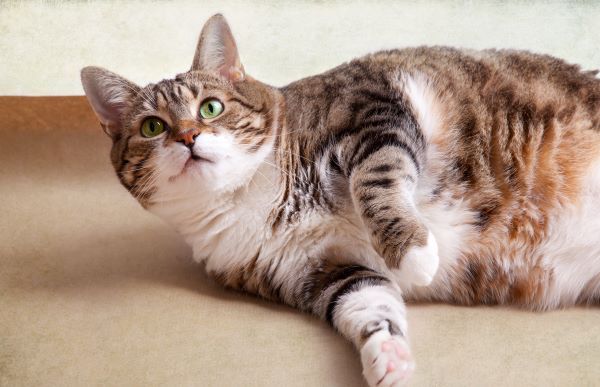
Reduced mobility
- Overall stiffness, occasionally a stiff gait when walking
- Urination outside litter box, because of painful movement getting in and out of it
- Inability to jump onto countertops, perches etc that were previously easily manageable
Changes in grooming behaviour
- Reduced or poor grooming, because of painful movement
- Over-grooming of painful joints, which may cause baldness or inflammation of the affected area
Personality changes
- More aggressive, snappish or irritable
- Dislikes being handled or touched in certain positions
- Depression
- Lethargy
Reduced level of activity
- Increased sleeping and resting
- Reluctance to go up and down stairs, run or jump
- Reluctance to go outside, play, hunt and explore
Abnormal posture, for example a “hunch” back where arthritis occurs in the spine
Causes of arthritis in dogs and cats
There are number of causal and contributing factors for arthritis in dogs and cats, including:
Aging
- Joints degenerate naturally as they age because of ongoing wear and tear and instability in the joints
- Cartilage, which forms a cushion between the bones at the joint, deteriorates and wears away.
Injury
- Injury to joint surfaces and supporting structures, for example anterior cruciate ligament injury.
- Trauma to the joint, for example from a car accident, sharp object or bite.
- Excessive stress on the joint, for example for working dogs or sporting dogs.
- Dislocation of the joint.
- Infection in the joint, resulting in joint tissue destruction.
Health condition
- Nutritional disorder brought on by poor nutrition.
- Occasionally, immune system disorders will lead to joint tissue inflammation and degeneration.
- Cushing’s disease – see our article on this condition here.
Obesity
- Overweight, obesity – not necessarily a cause, but it can accelerate the development of osteoarthritis or make an existing condition worse.
- Extra weight in the body puts additional stress on affected joints, exacerbating inflammation and pain.
- A 2018 study from the University of Sydney showed that obese cats with a body condition score of eight or above were significantly more likely to suffer from arthritis and other joint-related conditions than their slimmer counterparts.
In Australia, a 2018 study from the University of Sydney showed that obese cats with a body condition score of eight or above were significantly more likely to suffer from arthritis and other joint-related conditions than their slimmer counterparts, which in turn reduces their mobility and affects their quality of life. – Petsure Pet Health Monitor 2025
Breed
- Many larger sized pure bred dogs have an increased tendency to develop arthritis as they age, including German Shepherds, Labradors, Golden Retrievers, Staffordshire Bull Terriers, Border Collies.
- Burmese cats are more than twice as likely to develop arthritis than other breeds, possibly linked to their stocky build.
- Siberian cats are more than two-thirds less likely to develop arthritis than other breeds.
- Congenital defects affecting structural architecture in some cat breeds may predispose them to developing arthritis, for example:
- Patella luxation – dislocation of the knee cap – is more common in Abyssinian and Devon Rex.
- Hip dysplasia – development disorder of the hip joints – is more common in Maine Coon, Persians and Siamese.
What is the connection between hip dysplasia and arthritis?
- Hip dysplasia refers to the abnormal formation and misaligned stress points of the coxo-femoral joint.
- This causes the cartilage to wear away faster than it can regenerate.
- Arthritis sets in when the bony layer beneath the cartilage is exposed and the joint becomes inflamed, painful and restricted in mobility.
How is arthritis in dogs and cats diagnosed?
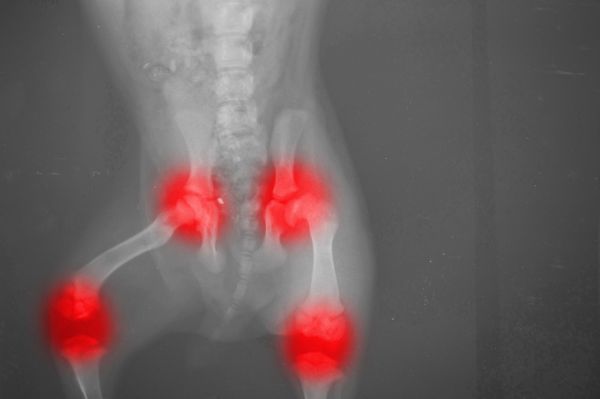
As the signs of arthritis in cats and dogs can be very subtle, it often goes undiagnosed. If arthritis is suspected, the vet will perform a physical examination, take X-rays, perform blood tests and use other diagnostic tests to investigate the cause of the disease.
It may be difficult for the vet to observe any symptoms of arthritis during the visit, so it is essential to recount your own observations of any signs or subtle indications that your cat or dog may be in pain.
In the physical examination, the vet will look for the following:
- Grinding of the joint, crepitus
- Roughness to the bone, abnormal bone formation
- Swelling, tenderness and pain in and around the joint
- Muscle atrophy
Additional tests may include:
- A radiograph or x-ray, performed under general anaesthetic, can confirm arthritis. In some cases, a contrast dye will be injected into the joint prior to the x-ray.
- A force plate analysis – a special mat with plate sensors and hooked up to a computer is placed on the floor. When the animal walks across the mat, the computer analyses the forces on the plates.
- Joint fluid aspiration to ascertain if the arthritis is degenerative or inflammatory.
Prognosis / Life expectancy…
With a personalised treatment plan that effectively manages pain and inflammation, it is possible for your cat or dog to live a happy and relatively pain-free life.
Treatment for arthritis in dogs and cats
 There is no cure for arthritis, as the physical changes that have occurred in the affected joints cannot be reversed. There is no treatment that can correct the structural damage to the animal’s joints, calcium deposits, scar tissue, missing or torn cartilage or bone changes at the joint. Therefore, cat and dog arthritis treatment is most commonly palliative and entails controlling and managing the pain and inflammation.
There is no cure for arthritis, as the physical changes that have occurred in the affected joints cannot be reversed. There is no treatment that can correct the structural damage to the animal’s joints, calcium deposits, scar tissue, missing or torn cartilage or bone changes at the joint. Therefore, cat and dog arthritis treatment is most commonly palliative and entails controlling and managing the pain and inflammation.
A personalised treatment plan will be developed for your cat or dog, considering its age, severity of the symptoms, stage of the disease and any other health problems or underlying diseases which need to be addressed.
Some of the common cat and dog arthritis treatment options are:
Prescription pain medications

Disease modifying osteoarthritis drugs
- Usually administered as arthritis injections for dogs or cats, these are typically given as a series of four injections over four weeks, repeated every six to twelve
- They stabilse joint membranes, assist cartilage repair and improve lubrication.
- There are minimal side effects to arthritis injections for dogs and cats.
NSAIDS – Non-steroidal anti-inflammatory drugs
- They reduce inflammation around the joints and provide the cat or dog arthritis pain relief.
- Those designed for humans have a high rate of potentially dangerous side effects, and should not be used for animals.
- Those specially designed for animals are much safer, but occasional adverse side effects can still occur.
- Veterinary supervision is required for the administration of arthritis medication for dogs and cats.
Steroids
- These include prednisone, dexamethasone and other corticosteroids.
- They can significantly reduce swelling and inflammation in arthritic joints.
- Long term use can cause damage to the joints and other side effects.
- They are no longer commonly prescribed as newer and safer medications are now available.
Visco-supplementation
- A gel-like substance is injected into the joint to lubricate the cartilage.
- These arthritis injections for dogs and cats can improve flexibility and lessen the pain.
Other cat and dog arthritis pain relief medication
- May be prescribed in severe cases or if other forms of cat or dog arthritis treatment are ineffective.
Nutritional supplements / Nutraceuticals
Dietary cat or dog arthritis supplements may help protect and repair cartilage and improve joint lubrication, thereby alleviating inflammation and reducing joint pain. Natural arthritis treatment for dogs and cats appear to work best when combined with other treatments.
Incorporating Omega-3 fatty acids (found in fish oil) in your pet’s diet can help reduce inflammation, improve joint function and support overall mobility. Feeding a balanced diet rich in antioxidants can also help combat stress, promoting long-term joint health and overall well-being.
Glucosamine, chondroitin sulfate, omega-3 fatty acids (fish oil), vitamin E, selenium and green lipped mussel are all commonly used as cat or dog arthritis supplements. These supplements are considered to be a natural arthritis treatment for dogs and cats that are safer than traditional drugs as they have minimal side effects. They are not a “quick fix” – it may take weeks to months before any improvement is noticeable.
Weight loss, if animal is overweight
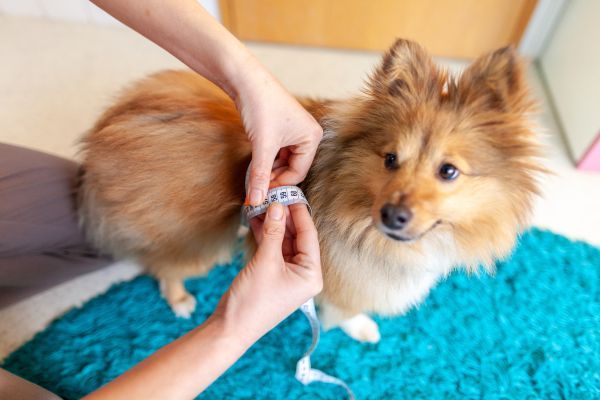
Weight loss is a very important element of managing arthritis in dogs and cats – some believe the most important factor of the cat or dog arthritis treatment protocol.
Overweight animals are overloading their joints, which contributes to joint inflammation and irritation, accelerating the progression of arthritis and exacerbating the cat or dog arthritis symptoms. Gradual weight loss is essential for the prevention of metabolic problems and should be done in a controlled manner under medical supervision.
Moderate, controlled exercise program
Keeping your dog or cat active year-round is essential for maintaining joint flexibility and preventing stiffness. Low-impact exercises like hydrotherapy, swimming, and gentle leash walks on soft surfaces can help support mobility without putting excessive strain on their joints.
Incorporating movement is a very important element of managing arthritis in dogs and cats, for the following reasons:
- Exercise maintains and improves joint flexibility and stimulates the production of lubricating and nourishing joint fluid.
- Exercise strengthens the muscles, tendons and ligaments surrounding the joints, which are then able to provide greater support for the joints.
- Exercise help to maintain normal to lean weight and prevents obesity.
- Exercise enhances overall well-being and mental stimulation.
The exercise program must be introduced slowly and increased gradually. Leash walking and/or swimming are highly recommended as part of any dog arthritis treatment plan. It is essential to allow significant rest periods each day, to encourage healing.
Avoid uncontrolled activity, such as chasing tennis balls, racing on sand dunes, which places pressure on the ligaments and further damage the joints.
Environmental changes
You can help your arthritic pet by providing the following:
- Warm, soft, cushioned bedding away from drafts – this may help to lessen discomfort and stiffness.
- Low sided litter trays for easy access for arthritic cats.
- Ramps or easier access to favourite counters and other raised areas and as an alternative to stairs, if possible.
- Help with grooming activities (trim nails, brush coat, etc).
- Extra warmth and comfort during the colder months, e.g. a heated pet bed or additional blankets – can help sooth sore muscles and improve circulation.
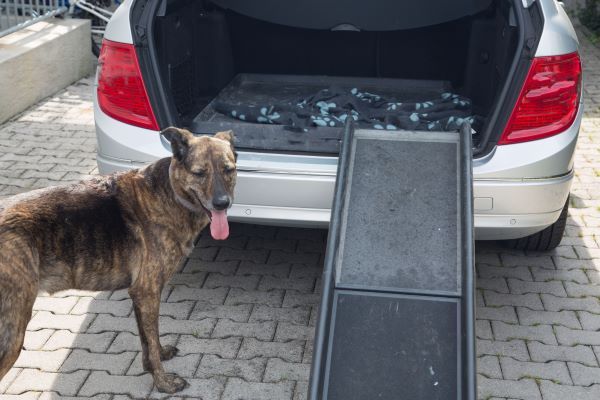
Surgery
There are a number of surgical options that may be recommended as part of the cat or dog arthritis treatment plan, including hip replacements and repairs to torn ligaments. Arthroscopy may be performed to treat cartilage separation, meniscal tears and ligament damage.
Surgical fusion (arthrodesis) may be performed on advanced cases.
Physical therapy
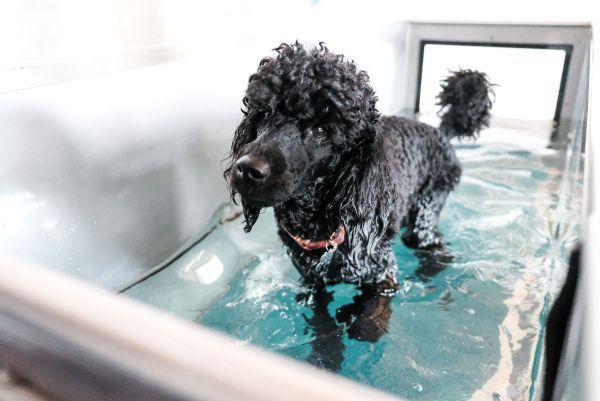
Physical therapy comprises a range of specific activities designed to improve strength and mobility without putting additional stress on the joint.
Physical therapy is an essential component of natural arthritis treatment for dogs and cats. If surgery has been performed, physical therapy is an important element of post-surgical recovery.
Physical therapy treatment options for managing arthritis in cats and dogs include:
- Physiotherapy / massage – may help with decreasing scar tissue, improving mobility and reducing pain.
- Hydrotherapy / water therapy – walking on the treadmill while the body is underwater – this increases movement and mobility without putting pressure on the joints and ligaments.
- Acupuncture
- Low level laser therapy
- Balancing exercises
- Strengthening exercises
In a nutshell
Arthritis in dogs and cats is a chronic degenerative disease that is common in older animals and usually results from everyday wear and tear on the joints. The most common form of arthritis in cats and dogs is osteoarthritis, a degenerative joint disease that can lead to continuous chronic pain in one or more of the weight-bearing joints.
Animals are stoic and try to mask their pain, so it can be difficult to pick up the subtle signs that your pet is suffering. Some of the more common dog arthritis symptoms you may notice include stiffness, limping and weight gain. Arthritis in cats may be more tricky for the owner to detect. Your vet will be able to diagnose whether your dog or cat has arthritis by performing a physical examination and certain tests.
Arthritis cannot be cured, but it can be prevented from worsening and there are cat and dog arthritis treatment options available to ease the discomfort and pain it causes. Arthritis injections for dogs and cats can help to improve joint condition and ease the pain. Arthritis medication for dogs and cats includes a number of natural remedies and supplements that may be beneficial as part of a long-term strategy. Diet and exercise are considered key components of a treatment program and maintenance of a good quality of life.
More information
- https://www.msdvetmanual.com/musculoskeletal-system/arthropathies-and-related-disorders-in-small-animals/degenerative-arthritis-in-dogs-and-cats?query=arthritis%20in%20dogs
- https://pets.webmd.com/cats/cat-arthritis-symptoms-pain-relief#1-2
- https://www.petmd.com/dog/slideshows/care/7-signs-of-arthritis-in-dogs-cats
- https://www.petmd.com/dog/general-health/evr_dg_remedies_for_arthritis_in_dogs
- https://www.petmd.com/dog/general-health/evr_dg_arthritis_how_to_recognize_and_manage_the_condition
- https://www.vetwest.com.au/pet-library/arthritis-and-cats
- https://www.vetwest.com.au/pet-library/arthritis-and-dogs
Bow Wow Meow Pet Insurance can help protect you and your pet should an unexpected trip to your vet occur.
- Find out more about our dog insurance options
- Find out more about our cat insurance options
- Get an instant online pet insurance quote
Bow Wow Meow is proud to have been awarded winner of Canstar’s ‘Most Satisfied Customers’ Award in the Pet Insurance category for both 2024 and 2025!
Bow Wow Meow is proud to have been chosen as Product Review’s Pet Insurance Award Winner every year from 2018 to 2025! This is based on 2,995 independent customer reviews (as at 21/01/2025), with an overall rating of 4.3*
Google Review rating = 4.5* (based on 968 reviews)
Trust Pilot rating = 4.6* (based on 531 reviews)
Bow Wow Meow is proud to have been chosen as Product Review’s Pet Insurance Award Winner every year from 2018 to 2025! This is based on 2,995 independent customer reviews (as at 21/01/2025), with an overall rating of 4.3*
Google Review rating = 4.5* (based on 968 reviews)
Trust Pilot rating = 4.6* (based on 531 reviews)
Bow Wow Meow has been chosen as a winner in the Finder Pet Insurance Awards 2024. Finder’s panel of experts analysed over 140 quotes to award our Ultimate Care Plan the winner of the “Pet Insurance – Value” category.

